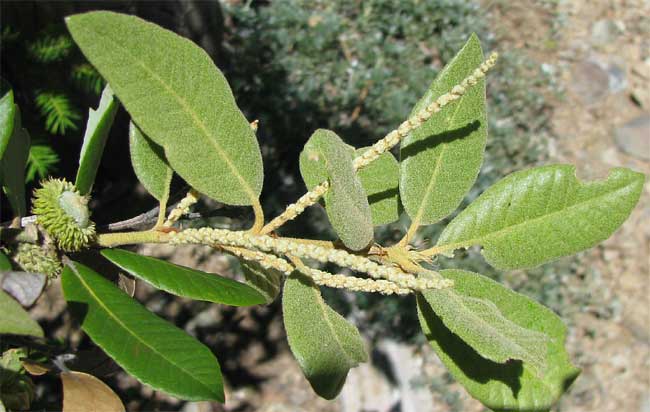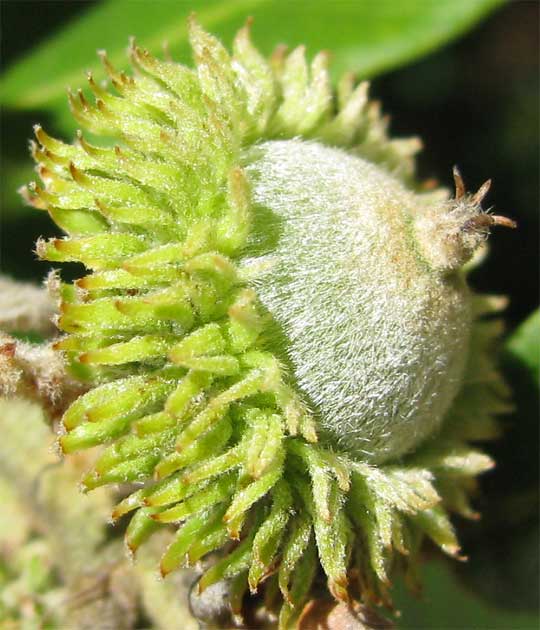Excerpts from Jim Conrad's
Naturalist Newsletter

from the the July 5, 2009 Newsletter, issued from the Siskiyou Mountains west of Grants Pass, Oregon:
TANOAKS FLOWERING
A close-up of an immature Tanoak acorn is shown below:

You know that the overlapping scales on oak acorn cups are blunt and kept pressed close to the cup. The Tanoak's acorn-cup scales in stark contrast flair away from the cup and end in sharp points. Tanoaks are sort of an evolutionary bridge between oaks and chestnuts.
A hundred or more tanoak species are native to eastern and southeastern Asia, but there's only one species outside that evolutionary tanoak center, and that's ours. Recent genetic studies reveal that our Tanoak has been genetically isolated from the Asian species for so long and is so essentially different from the Asian species that probably it should be reassigned to its own genus.
Our Tanoak species is found only in Oregon and California. The field guide says that it grows up to 100 feet tall but what I see seldom higher than 20 feet. Sometimes knee-high Tanoaks bear male catkins and acorns as if they were adults. I'm assuming that these are Dwarf Tanoaks, Lithocarpus densiflorus var. echinoides, which intergrades with the larger variety.
The name tanoak reflects the former use of employing bark extract as a tanning agent. Tanoak acorns are bitter and need two years to mature. Squirrels eat them, and the bitter tannin in them can be leached out with running water. Some groups of indigenous Americans preferred Tanoak acorns because their high tannin content preserved the acorns better when stored for a long time.
Sadly, Tanoak is one of the species most seriously affected by Sudden Oak Death caused by the disease pathogen Phytophthora ramorum, which is not a fungus, not a bacterium and not a virus, but rather something else entirely. Sudden Oak Death disease isn't yet a problem in our local area but I suppose it's just a matter of time.